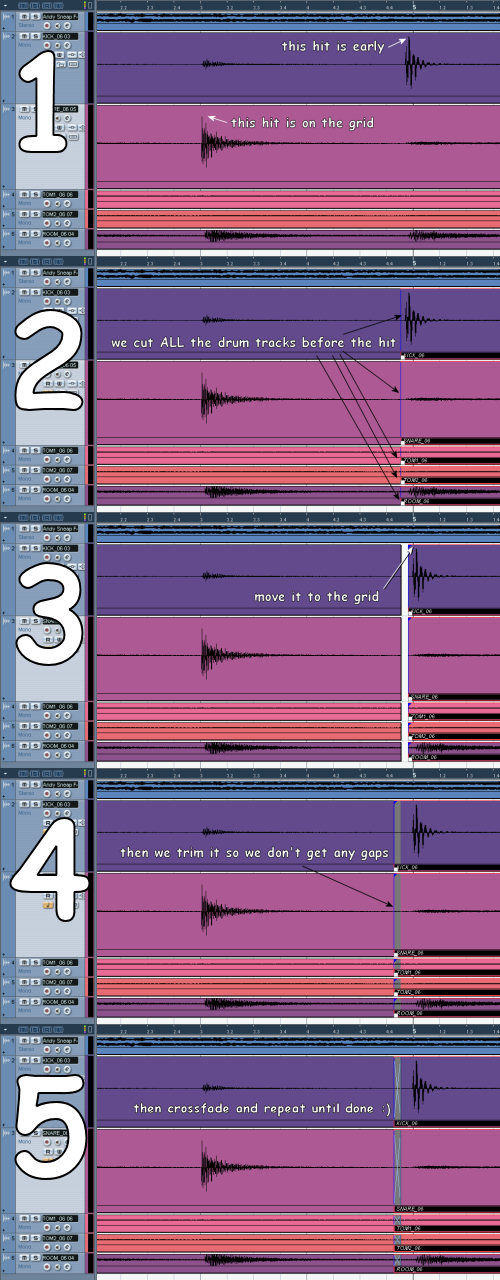For those who are interested in what I did, here are some comments to stuff I would like to point out:
GUITARS:
- Due to the fizziness of the SM57, I applied the usual Lo-Pass filter @8000Hz to get rid of it. A Hi-Pass filter at 136 Hz makes room for the bass. Both are on the guitar buss. No additional EQ applied (because I am not allowed to use my Pultec or VibeEQ...)
- To even out the guitar-levels a bit, I have a compressor on the guitar buss at a 2:1 ratio, attack to leave the transients where they belong to (20 ms, could be even longer, I guess) and a fairly fast release.
- The lead guitars are lo-passed even more because and got +3dB at around 1000Hz to push them to the front. Even more hi-pass at @200 Hz get rid of everything we do not need here. This EQ makes the guitars sound more round and less fizzy.
BASS:
- No special treatment, except for a Hi-Pass @80Hz (PODs have boomy basses).
DRUMS:
- I widened the ROOM track using a short stereo delay, because ahjteam only had a single overhead mic and I want a more stereo image. Additionally, I panned the TOM-tracks a bit left and right coz they have a lot of room sound in them. First I gated the room sound away, but now I left them there.
- I usually have a buss compressor and a saturator on the drum buss to beef things up and needed to find some free stuff. I used Ferox for saturation and did not find a cool compressor, yet. The W1 limiter squishes everything a faily bit.
- I wanted to make the snare sound crisper, but I am not really done with the mixing. I added Camelcrusher for this purpose and the EQ Hi-Passes @200Hz and adds some 4KHz presence.
- The kick sounds already very good on it's own. I used a gate (a transient designer would be better) to make it more defined and the EQ adds the usual 3500 Hz click and dips at 300 Hz.



